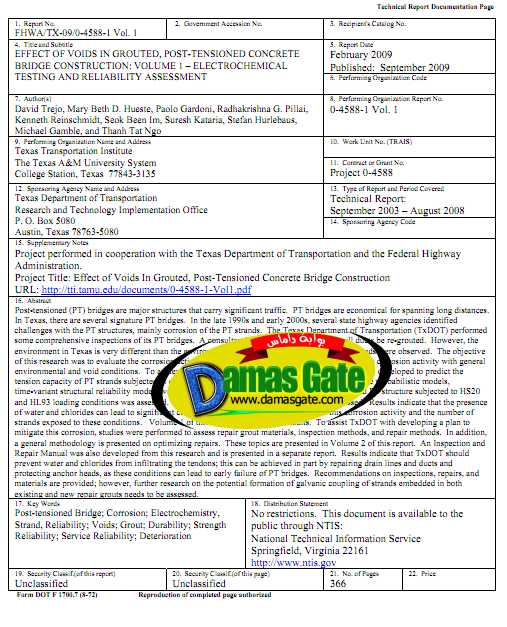Effect of Voids In Grouted Post-Tensioned Concrete Bridge Construction - Vol-1

1.1. PRESTRESSED CONCRETE TECHNOLOGY
In the late 1920s, Eugene Freyssinet, a French civil engineer, pioneered the prestressed concrete technology. He patented prestressed concrete technology in 1928 and is considered the father of prestressed concrete (Emmanuel 1980). Although Freyssinet pioneered prestressed concrete, Doehring patented prestressing methods as early as 1888. Freyssinet recognized that only highstrength prestressing wire could counteract
the effects of creep, develop anchorage, and improve other load-carrying attributes, which helped in the widespread use of prestressed concrete technology in many structural systems,
including long-span segmental bridges. Two types of stressing technologies are commonly
used. These include 1) pre-tensioning, where the stress is applied
before the concrete hardens; and 2) post-tensioning, where the stress
is applied after the concrete hardens. This document focuses on the electrochemical characterization and probabilistic capacity modeling
of post-tensioning strands and structural reliability of grouted, post-tensioned
(PT), segmental concrete bridges (denoted as “PT bridges” herein).
Download
http://s18.alxa.net/s18/srvs2/02/002...tion.Vol-1.rar